
|
SUMMARY:
Confused customers. Frustrating support. Wasted ad spend. Diminished SERP visibility. These companies were bleeding results – until they uncovered the cause. Clarity changed everything – from fixing copy and support issues to optimizing CTAs and uncovering an SEO penalty. Read on to see examples from a professional headshot generator, cashback program for retailers, and guest post service. |
Action Box: Get Productive With AI
Join us for Get Productive With AI on February 27th at 1 pm EST. There is no cost (from MarketingSherpa’s parent organization, MeclabsAI).
HeadshotPro is an AI photo studio for professional headshots. It is owned by Postcrafts.
The company's demographic tends to skew older. Many customers don't have a lot of experience using web apps and have questions about uploading photos, processing refunds, or finding their invoice.
In addition, the team believes that over 90% of customers who use the product love it, but (like with most products) the customer service team is overexposed to the small minority of users who are upset and want their money back.
There was a 'Contact Support' button in the bottom-right of the onboarding. Once it was clicked, it took users to a ‘Support & Feedback’ section. The section had a 'Contact Us' option that expanded to an email address the user had to click to send an email.
At the top of the section, the instructions said ‘When contacting us, please include the following information: EvVxXLfHH5Ui2O7LCPJBcVdMHQq2.’ That long string of letters is an example of a user ID, which the person would have to copy and paste into the email they sent to customer support.
Creative Sample #1: Previous customer support experience for AI application

After reading several profanity-laced emails, the team wanted to see what they could do to better illustrate that there is a real person reading these customer service emails.
“People forget there's an actual human behind the curtain answering all the emails. And that person had little to do with the state of AI image generation in early 2024!” said Danny Postma, founder, HeadshotPro.
Users were frustrated by unclear instructions, time zone gaps, and AI’s impersonal reputation (there are a lot of AI apps that don't believe in customer support and that was hurting the perception of HeadshotPro’s customer support as well).
The team tried an auto-responder, to let the user know they got the message and promise the customer they will be taken care of. They soon realized it wasn’t enough on its own.
So they made the following changes to humanize the support form:
Creative Sample #2: New customer support experience for AI application

Since they are an AI company with actual human customer support, they wanted the user to perceive the value of this investment. “Customer service can be a strong differentiator that users actually care about,” he said.
They even changed their refund policy to allow the team to focus more on serving the customer. “Shifting to a customer-first refund policy has allowed us to free up hours of time that was spent qualifying refunds,” Postma said.
Another way they're trying to lean into the human touch is by going on the offensive. They reach out to customers who voluntarily submit the feedback survey. “If they took the time to leave a ton of feedback, we'll add a little bonus to their account. If they offhand mentioned they really liked a certain style, we'll credit their account with a few more,” he said.
After implementing these changes in March, negative reviews on TrustPilot plummeted from 73% to just 3.5%. “There are clearly many variables at play, but we believe this was a key contributor to decreasing our negative (1-star or 2-stars) reviews on our TrustPilot page,” said Jamie Sutton, Director of Marketing, HeadshotPro.
Here’s how reviews trended on TrustPilot:
As of press time, 78% of Headshot Pro’s Trustpilot reviews are five star and 4% are one star.
It should be noted that the total volume of customer support inquiries was virtually unchanged since users only saw this experience after choosing to reach out.
Also, the customer service team is getting much friendlier emails now. Customers often greet the customer support team by their first name now that it's visible.
Cashbackmedvisa.dk is a cashback program launched in partnership with Visa and operated by Loyalty Key A/S in Denmark.
The initial campaigns at Cashbackmedvisa.dk focused on broad messaging with limited targeting. For example, one ad compared the benefits of acquiring new customers versus increasing retention.
Creative Sample #3: Previous Facebook ad for cashback program

The above ad is in Danish, so here is an English translation for our readers:
[Header] Cashback | VISA
Acquiring new customers
Increased retention of your existing customers
[CTA button] Get more customers
Another ad outlined the benefits of Cashback with VISA using a general infographic but didn’t directly address pain points or provide a compelling value proposition.
Creative Sample #4: Previous Facebook ad for cashback program lacking compelling value prop

English translation from the Danish:
How to get more customers with Cashback with VISA
[the middle part is in English]
[CTA button] Get more customers
After running for a month, these campaigns generated some leads, but the Cost per Lead (CPL) was high, and the quality of leads didn’t align with the team’s ideal merchant profile.
The team tried to create ads that better addressed the merchants’ pain points. For example, the below ad has text that mentions a goal a merchant would have, and then showcases testimonials from existing partners, highlighting their positive experiences and measurable results from the partnership.
Creative Sample #5: New Facebook ad with video

In English:
[Header] Cashbackmedvisa.dk
Do you dream of getting more customers for your shop or webshop? 🛍️💳
With CashbackmedVisa.dk, your business is marketed directly to 250,000 ready-to-buy Danes. No startup costs—it’s no cure, no pay! Get started today by filling out the form.
[CTA in white box below ad] Attract more customers with our B2B solution
Fill out the form and get more customers for your business
This approach made the benefits more tangible and relatable, giving potential partners real-world proof of success. By emphasizing trust and proven outcomes, the new messaging resonated strongly with the target audience.
Additionally, they incorporated visuals that showed the size of their network and their risk-free guarantee (‘no cure, no pay’ means that they only pay if they get results).
Creative Sample #6: New Facebook ad with visual highlighting risk-free guarantee

In English:
[Header] Cashbackmedvisa.dk
Do you own a shop, café, webshop, or restaurant and want even more customers?
Partner with CashbackmedVisa.dk and gain direct access to 250,000 ready-to-buy Danes.
It’s no cure, no pay, and you can get started within 48 hours. Fill out the form, and we’ll contact you.
[Image Text] Get more customers
No Cure, No Pay
[CTA button on image] Fill out the form now
[CTA in white box below ad] Attract more customers with our B2B solution
Fill out the form and get more customers for your business
In addition to the messaging changes, the team used more precise targeting. Originally, the ads were targeted very broadly to anyone interested in business or entrepreneurship. The team narrowed it down specifically to people who either listed themselves as business owners or administered a Facebook business page.
“Facebook Ads became one of our most effective tools for growing our network of partners,” said Allan Stolc, CDO, Cashbackmedvisa.dk.
The team got the following results after two months of running the new ads:
“By revamping our creative strategy and ad targeting, we transformed Facebook from a general awareness platform into a high-quality lead generator,” said Victor André Enselmann, founder, Modeva (Cashbackmedvisa.dk’s agency).
Adsy is a guest post service.
While pinpointing exact SEO ranking factors is challenging, this case suggests that spammy backlinks – even from seemingly legitimate sources – can trigger search penalties.
The team published a post titled ‘SEO Conversion Explained: Best Practices for Tracking and Improvement’ on October 23, 2024. Over the next month, it got 1,920 total impressions and four total clicks from search results, according to Google Search Console.
On November 23rd, it got a link from a blog post titled ‘SEO Basics for Freelance Writers to Succeed in 2024’ from a guest post the team wrote. After this link, the blog post had 3,040 total impressions and 12 total clicks.
There was a slight uptick in impressions, although it’s hard to know if the link had anything to do with it.
Creative Sample #7: Search impressions after first link

On December 20th, the blog post got a link naturally from a post titled ‘How to Use UX Testing to Improve Your SEO.’ Just a couple of days after the link, impressions dropped from 50-100 per day to almost nothing.
Creative Sample #8: Search impressions after second link

The team analyzed the pages they received links from and found that they weren’t plagiarized or AI generated. The first site had a Domain Rating of 49 according to Ahrefs and an Authority Score of 31 according to Semrush, and the second site had a DR of 69 and Authority Score of 33.
The first site used ‘aspects to consider’ for the link anchor text and the second used ‘organic conversion rate.’ Nothing too spammy for either site.
Both websites had slowly declining traffic but nothing drastic, and both sites had content topics that were all over the place.
But here was the main difference between the two sites – the first page didn’t have any annoying pop ups or ads while the second page had ‘insanely spammy ads and popups,’ according to the team.
“We know for a fact that users hate [ads and random popups]. But it seems that Google doesn’t like it either,” said Valeria Riabina, Content Marketer, Adsy.
While this is a very interesting hypothesis and my gut says it has some credibility, I did want to point out that this is based on impressions data with very few clicks on the post. When I pushed back, the team brought up a fair point – ‘a decrease in impressions reflects a drop in the average ranking position of a page’s queries.’
When I also pointed out that the drop happened to coincide with a December 2024 Google algorithm spam update, the team pointed out ‘Whether the decline was triggered by the algorithm update or pre-existing filters is not the main point of our analysis. What matters is that spammy links had a negative impact.’
The team has not tried to disavow the link yet, saying they may try this tactic later as fodder for a future case study.
Marketing Budget Charts: B2B customer experience investments (plus 4 budgeting tips)
Customer Experience and Marketing: 3 quick case studies to help you think like your customers
Get Better Business Results With a Skillfully Applied Customer-first Marketing Strategy

The customer-first approach of MarketingSherpa’s agency services can help you build the most effective strategy to serve customers and improve results, and then implement it across every customer touchpoint.
Get More Info >MECLABS AI
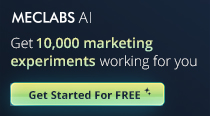
Get headlines, value prop, competitive analysis, and more.
Use the AI for FREE (for now) >Marketer Vs Machine

Marketer Vs Machine: We need to train the marketer to train the machine.
Watch Now >Live, Interactive Event

Join Flint McGlaughlin for Design Your Offer on May 22nd at 1 pm ET. You’ll learn proven strategies that drive real business results.
Get Your Scholarship >Free Marketing Course
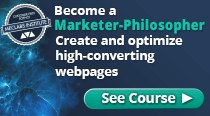
Become a Marketer-Philosopher: Create and optimize high-converting webpages (with this free online marketing course)
See Course >Project and Ideas Pitch Template
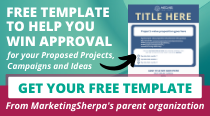
A free template to help you win approval for your proposed projects and campaigns
Get the Template >Six Quick CTA checklists
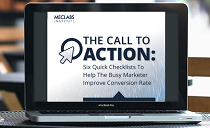
These CTA checklists are specifically designed for your team — something practical to hold up against your CTAs to help the time-pressed marketer quickly consider the customer psychology of your “asks” and how you can improve them.
Get the Checklists >Infographic: How to Create a Model of Your Customer’s Mind
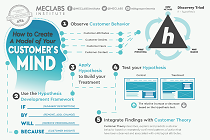
You need a repeatable methodology focused on building your organization’s customer wisdom throughout your campaigns and websites. This infographic can get you started.
Get the Infographic >Infographic: 21 Psychological Elements that Power Effective Web Design
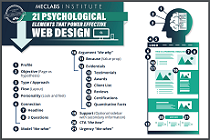
To build an effective page from scratch, you need to begin with the psychology of your customer. This infographic can get you started.
Get the Infographic >Receive the latest case studies and data on email, lead gen, and social media along with MarketingSherpa updates and promotions.